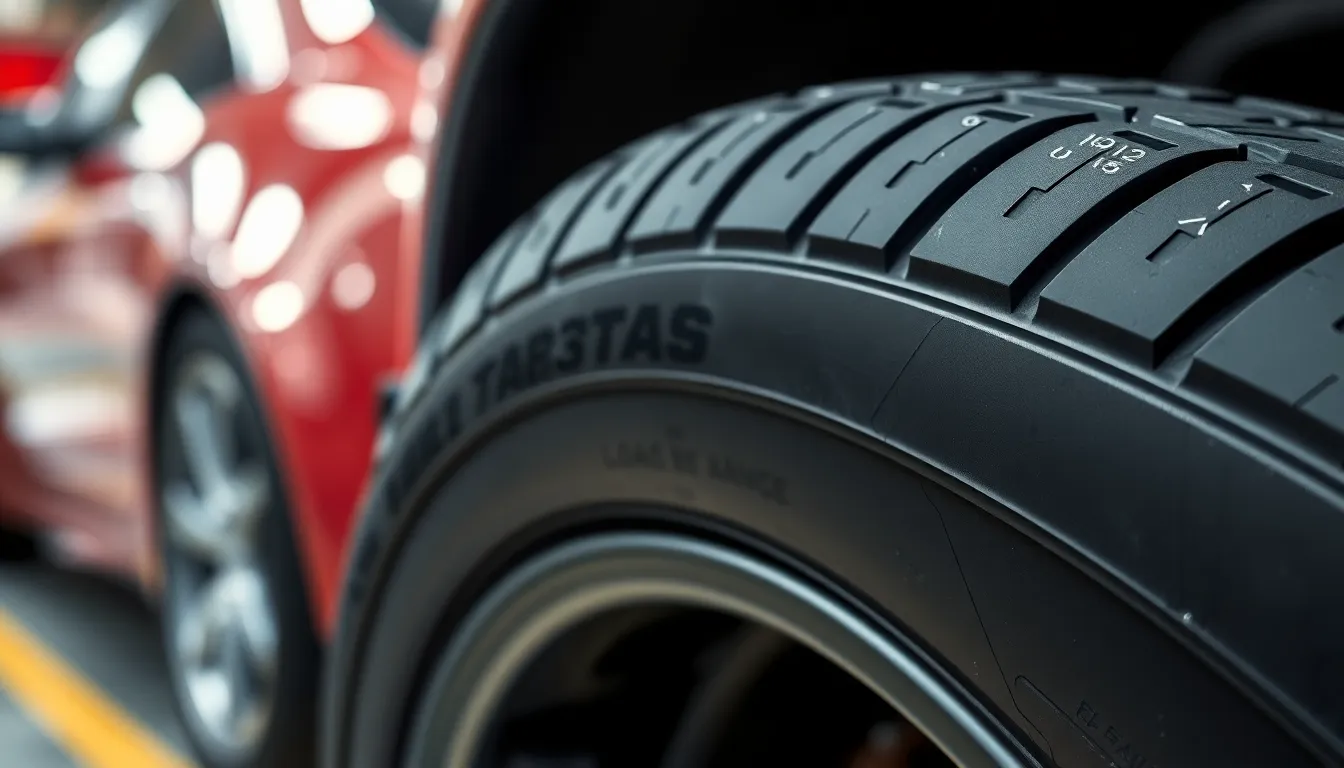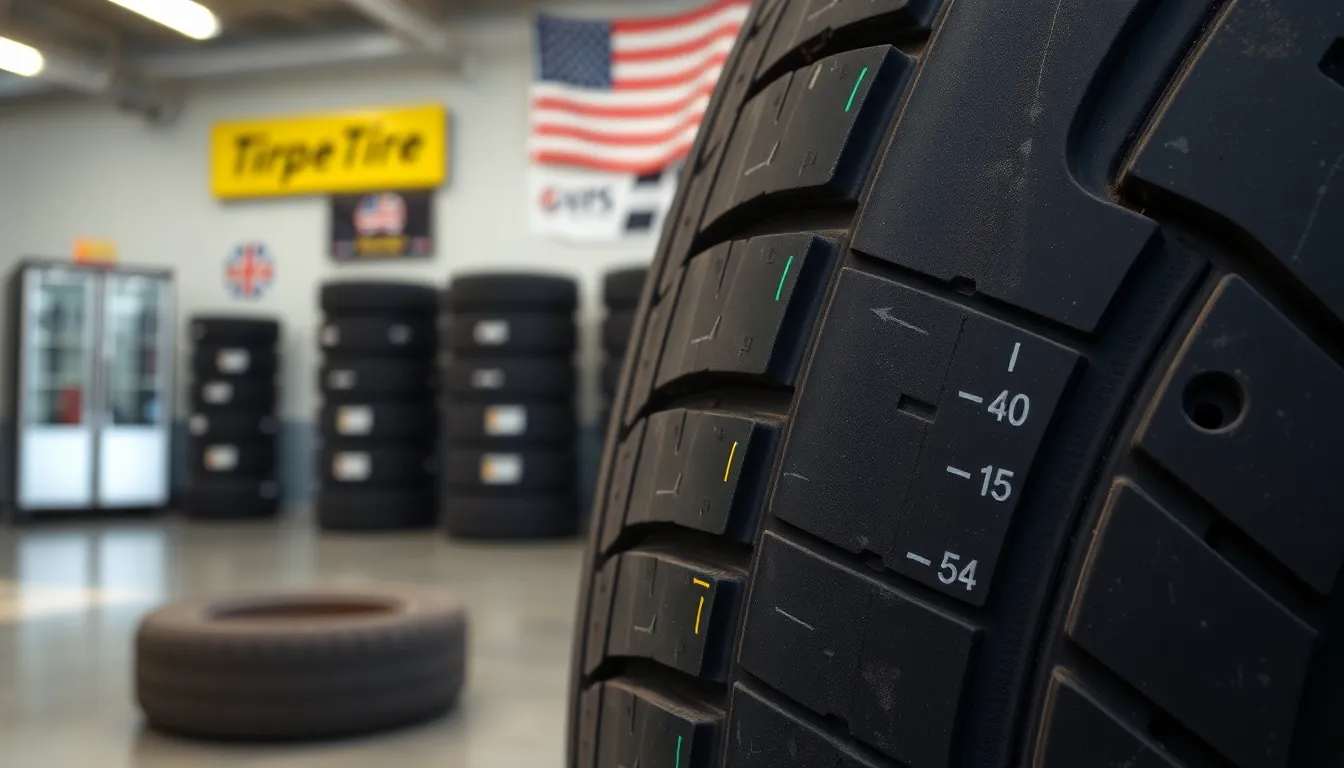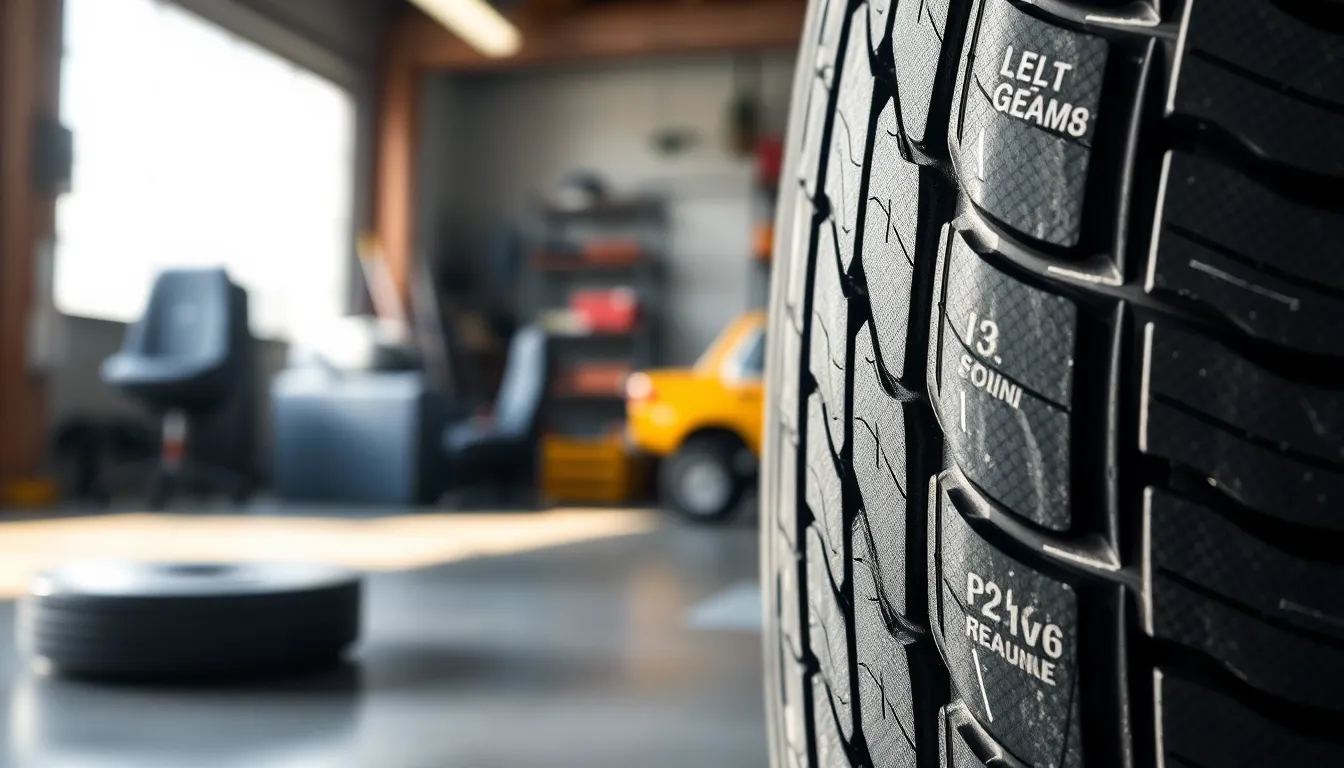We’ve all stood in front of a tire wondering what those mysterious numbers and letters actually mean. When you’re shopping for new tires or trying to understand your current set, determining the ply rating becomes crucial for making the right choice for your vehicle and driving needs.
Understanding tire ply isn’t just about technical knowledge – it’s about safety, performance, and getting the most value from your investment. The ply rating tells us how much weight a tire can safely carry and helps determine whether it’s suitable for your exact vehicle type and usage patterns.
Modern tire sidewalls contain all the information you need, but knowing where to look and how to interpret these markings can save you time, money, and potentially dangerous situations on the road. Let’s decode the mystery behind tire ply ratings and empower you with the knowledge to make informed decisions about your tires.
What Is Tire Ply and Why Does It Matter?
Tire ply refers to the layers of fabric or steel cords embedded within a tire’s structure that provide strength and durability. Modern tires contain multiple ply layers that work together to support vehicle weight and maintain structural integrity under various driving conditions.
Understanding Tire Construction Basics
Tire construction involves multiple components that create a strong and flexible structure for safe driving. The carcass forms the tire’s foundation using fabric plies made from polyester, nylon, or steel materials. These materials run from bead to bead across the tire’s interior surface.
Radial tires contain plies that extend perpendicular to the tire’s centerline, while bias ply tires feature plies that cross at diagonal angles. Steel belts sit beneath the tread area in radial construction to provide additional stability and puncture resistance. The sidewall connects the tread area to the bead and flexes during vehicle operation.
Each ply layer adds exact characteristics to the tire’s overall performance profile. Polyester plies offer lightweight strength and smooth ride quality. Nylon plies provide enhanced durability and heat resistance for high speed applications. Steel cord plies deliver maximum strength for heavy duty vehicle requirements.
The Role of Ply in Tire Performance
Ply rating directly affects how much weight a tire can safely carry during operation. Higher ply ratings indicate stronger construction that supports heavier loads without structural failure. Load carrying capacity increases proportionally with ply rating numbers.
Performance characteristics change significantly based on ply construction methods and materials used. Radial ply tires generate less heat buildup and provide better fuel economy compared to bias ply alternatives. Heat dissipation improves with radial construction because plies don’t cross each other at angles.
Ride comfort varies between different ply configurations and rating levels. Lower ply ratings typically produce softer rides with better shock absorption. Higher ply ratings create firmer rides but offer superior stability during cornering and braking maneuvers.
Tread wear patterns reflect the underlying ply structure’s influence on tire contact with road surfaces. Even ply distribution promotes uniform tread wear across the tire’s width. Irregular ply construction can cause premature wear in exact tread areas.
Where to Find Ply Information on Your Tire

Tire ply information appears on the sidewall through load range designations rather than traditional ply counts. Modern tire manufacturers use load range letters to indicate the tire’s strength and load carrying capacity.
Reading the Tire Sidewall Markings
The tire sidewall displays several critical markings that help us identify ply ratings. Load range appears as a single letter near the tire size and serves as the primary indicator of ply strength.
Common load range designations include:
| Load Range | Equivalent Ply Rating | Typical Application |
|---|---|---|
| C | 6-ply | Light trucks, commercial vehicles |
| D | 8-ply | Heavy duty trucks |
| E | 10-ply | Commercial and heavy load applications |
Tire size information appears in formats like “P225/60R17” and sits adjacent to the load range marking. Load index displays as a separate numerical value that indicates maximum weight capacity but doesn’t directly reveal ply rating information.
Manufacturers position these markings consistently on the sidewall to ensure easy identification. Load range letters provide more accurate strength information than traditional ply counts since modern tires use advanced materials that exceed the strength of historical fabric plies.
Decoding DOT Numbers and Service Descriptions
DOT numbers contain manufacturing date information but don’t include ply rating data. These alphanumeric codes identify production facilities and manufacturing weeks without indicating tire construction details.
Service descriptions cover speed ratings and performance characteristics rather than ply information. Speed ratings appear as letters (H, V, Z) that indicate maximum safe operating speeds under optimal conditions.
Load index numbers within service descriptions specify weight limits in kilograms or pounds. These values complement load range information but represent different measurement systems for tire capacity assessment.
We can distinguish between these various sidewall markings by understanding their exact purposes and locations on the tire sidewall.
Different Methods to Determine Tire Ply Rating

We can identify tire ply ratings through several reliable approaches that provide accurate information about tire strength and load capacity. Each method offers distinct advantages depending on our exact situation and available resources.
Visual Inspection Techniques
Sidewall Inspection reveals ply ratings directly on the tire’s surface near the load range designation. The sidewall contains essential information about tire strength and load capacity that manufacturers embed during production.
Load Range Letters replace traditional ply count numbers on modern tires with standardized designations. These letters correspond to exact ply ratings where “C” indicates 6-ply equivalent strength while “D” represents 8-ply and “E” signifies 10-ply capacity.
Reading Tire Markings requires locating the service description area where load range letters appear alongside other specifications. We examine the sidewall systematically to identify these crucial indicators of tire construction strength.
Using Manufacturer Resources
Tire Specifications provide comprehensive details through official manufacturer documentation and websites. These resources contain precise ply ratings and load ranges that correspond to exact tire models and sizes.
Owner’s Manual consultation offers vehicle-exact tire recommendations including appropriate ply ratings for our particular make and model. The manual contains manufacturer-approved specifications that ensure optimal performance and safety.
Online Databases from tire manufacturers allow us to search by tire size or model number to access detailed specifications. These digital resources provide current information about ply ratings and load capacity limits.
Professional Assessment Options
Tire Shops employ experienced technicians who can inspect tires and verify ply ratings accurately. Local tire retailers possess specialized knowledge and tools to assess tire construction and recommend appropriate replacements.
Professional Inspections conducted by mechanics or tire specialists offer expert evaluation of tire condition and specifications. These assessments include verification of ply ratings alongside overall tire health and suitability for our vehicle.
Technical Consultations with automotive professionals provide comprehensive analysis of tire requirements based on driving conditions and vehicle specifications. Expert recommendations ensure we select tires with appropriate ply ratings for our exact needs.
Common Ply Ratings and Their Applications

Different vehicle types require exact ply ratings to handle their intended loads and driving conditions. We’ve categorized the most common applications to help you understand which ply rating works best for your vehicle.
Passenger Vehicle Tires
Standard passenger cars typically use 4 ply rating tires that provide the optimal balance between comfort and durability. Most sedans, coupes, hatchbacks, and small SUVs operate effectively with this standard load configuration.
Load range A tires (equivalent to 2 ply rating) appear on some compact cars and economy vehicles where weight reduction takes priority. These lighter construction tires enhance fuel economy but limit load carrying capacity.
Higher ply ratings like 6 or 8 ply occasionally appear on performance passenger vehicles or larger sedans that require additional sidewall strength. Luxury vehicles and sports cars sometimes specify these enhanced ratings for improved handling characteristics.
Light Truck and Commercial Tires
Light trucks and commercial vehicles demand significantly higher ply ratings ranging from 8 to 14 ply depending on their load requirements. Pickup trucks commonly use load range C (6 ply) or load range D (8 ply) tires for standard hauling applications.
Heavy duty trucks and commercial delivery vehicles typically require load range E (10 ply) tires to safely carry their maximum payload capacity. Construction vehicles, box trucks, and work vans rely on these robust tire constructions for daily operations.
Extreme duty applications like towing heavy trailers or carrying maximum cargo loads often specify load range F (12 ply) or load range G (14 ply) tires. These highest rated tires provide maximum load carrying capacity but produce a firmer ride quality compared to lower ply alternatives.
Signs Your Tire Ply Rating Needs Attention

Overloading represents the most critical indicator that your current tire ply rating might be insufficient for your driving needs. We see excessive load conditions frequently cause tire failure when drivers consistently carry weights beyond their tire’s rated capacity. Heavy cargo loads or towing trailers requires tires with higher ply ratings to maintain structural integrity and prevent dangerous blowouts.
Tire wear patterns reveal important information about whether your current ply rating matches your vehicle’s requirements. Uneven wear across the tread surface often indicates that the tire construction isn’t handling the load distribution properly. Rapid tire wear on the outer edges typically suggests the ply rating can’t support the weight being carried.
Inadequate traction during loaded conditions signals that your tires lack the structural support needed for optimal performance. We notice this problem particularly when vehicles struggle to maintain grip while carrying heavy loads or pulling trailers. Tires with insufficient ply ratings flex excessively under load and reduce the contact patch with the road surface.
Sidewall bulging becomes visible when the tire ply construction can’t adequately support the applied weight. This deformation occurs most commonly in commercial applications where operators unknowingly exceed their tire’s load capacity. Persistent bulging indicates immediate replacement with higher ply rated tires.
Heat buildup during extended driving represents another warning sign of inadequate ply rating for your application. We find that under-rated tires generate excessive heat through increased flexion and internal friction. This thermal stress accelerates tire degradation and increases the risk of catastrophic failure.
Vehicle handling characteristics change noticeably when tire ply ratings don’t match the intended use. Steering becomes less responsive and the vehicle feels unstable during cornering or braking maneuvers. These performance issues often indicate that higher ply rated tires would better serve the vehicle’s operational requirements.
Conclusion
Understanding tire ply ratings empowers us to make smarter purchasing decisions and maintain safer driving conditions. We’ve explored how modern load range designations replace traditional ply counts and where to locate this crucial information on tire sidewalls.
Armed with this knowledge we can confidently assess whether our current tires meet our vehicle’s demands or if we need higher-rated options. Remember that proper ply selection directly impacts our safety load capacity and overall driving experience.
Whether we’re driving a compact car or hauling heavy loads the principles remain the same: match the tire’s strength to our exact needs. By staying vigilant about wear patterns and performance changes we’ll know when it’s time to upgrade to a more suitable ply rating for optimal road safety.
Frequently Asked Questions
What is tire ply rating and why is it important?
Tire ply rating indicates the number of fabric or steel cord layers that provide strength and durability to a tire. It’s crucial because it determines how much weight a tire can safely carry and affects performance characteristics like ride comfort, heat dissipation, and fuel economy. Understanding ply ratings helps ensure you select tires appropriate for your vehicle’s load requirements and driving conditions.
Where can I find the ply rating information on my tires?
Modern tires display ply information through load range designations on the sidewall instead of traditional ply counts. Look for load range letters (like C, D, or E) which indicate tire strength. You can also check manufacturer specifications, owner’s manuals, or consult with tire professionals for accurate ply rating information specific to your tire model.
What ply rating do I need for my passenger car?
Most standard passenger vehicles use 4 ply rating tires, which provide an optimal balance of comfort and durability for everyday driving. Lighter vehicles may use 2 ply tires for better fuel economy, while performance vehicles might require 6 or 8 ply tires for additional sidewall strength and handling capabilities.
How do I know if my tire’s ply rating is insufficient?
Signs of inadequate ply rating include excessive tire wear, sidewall bulging, poor traction, heat buildup, and changes in vehicle handling. If you consistently carry heavy loads or notice these symptoms, you may need higher ply rated tires. Overloading beyond the tire’s capacity is a critical safety concern that requires immediate attention.
What’s the difference between radial and bias ply tires?
Radial tires have plies running perpendicular to the tread direction, offering better fuel economy, heat dissipation, and longer tread life. Bias ply tires have plies crossing at angles, providing stronger sidewalls and better load-carrying capacity. Most modern vehicles use radial construction, while bias ply is common in specialty applications requiring maximum durability.
Do commercial vehicles need higher ply ratings?
Yes, commercial vehicles and light trucks typically require higher ply ratings ranging from 8 to 14 ply. Heavy-duty applications often need 10 to 14 ply tires for maximum load capacity and durability. The specific ply rating depends on the vehicle’s weight, intended use, and load requirements for safe operation.

